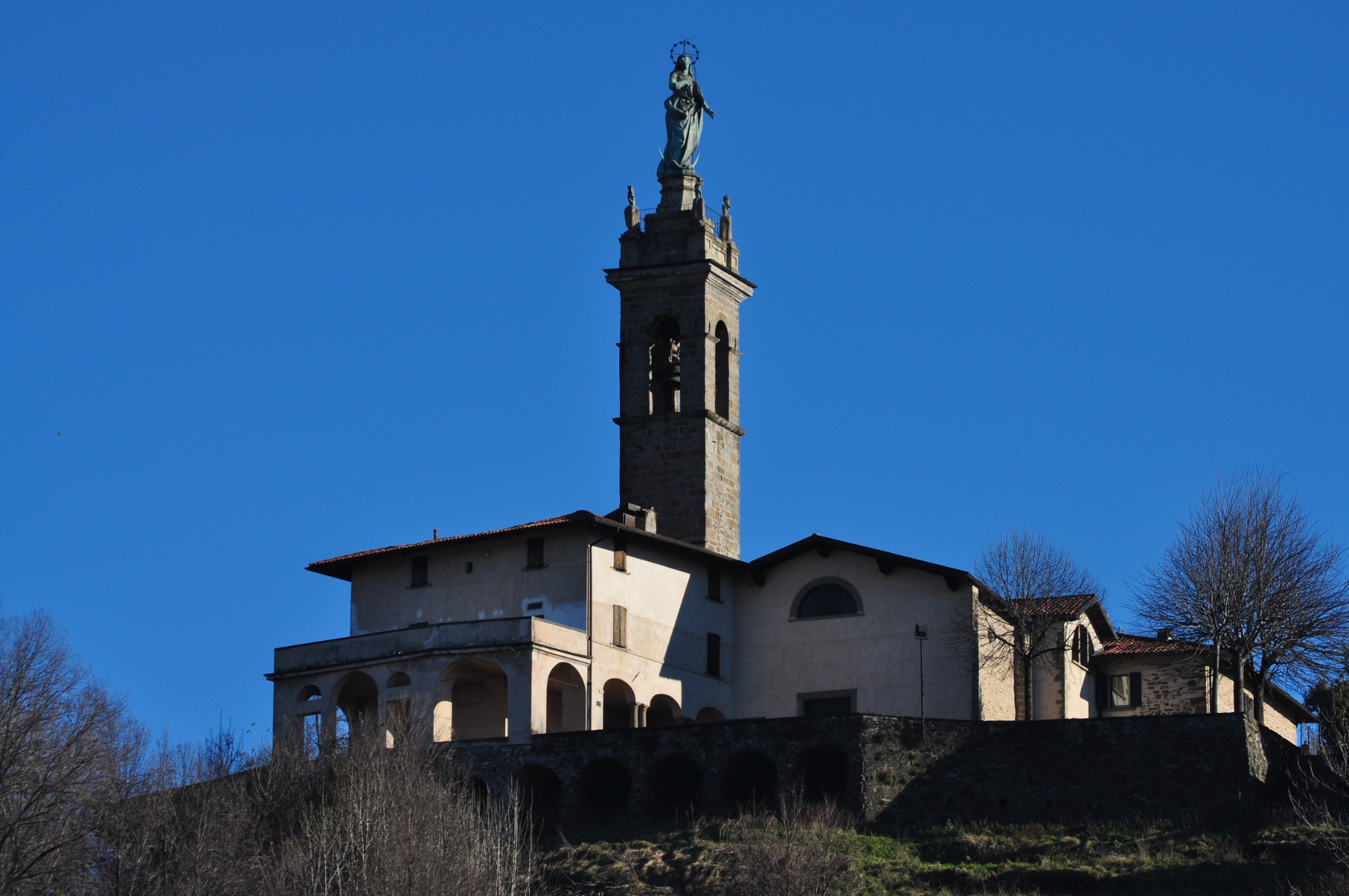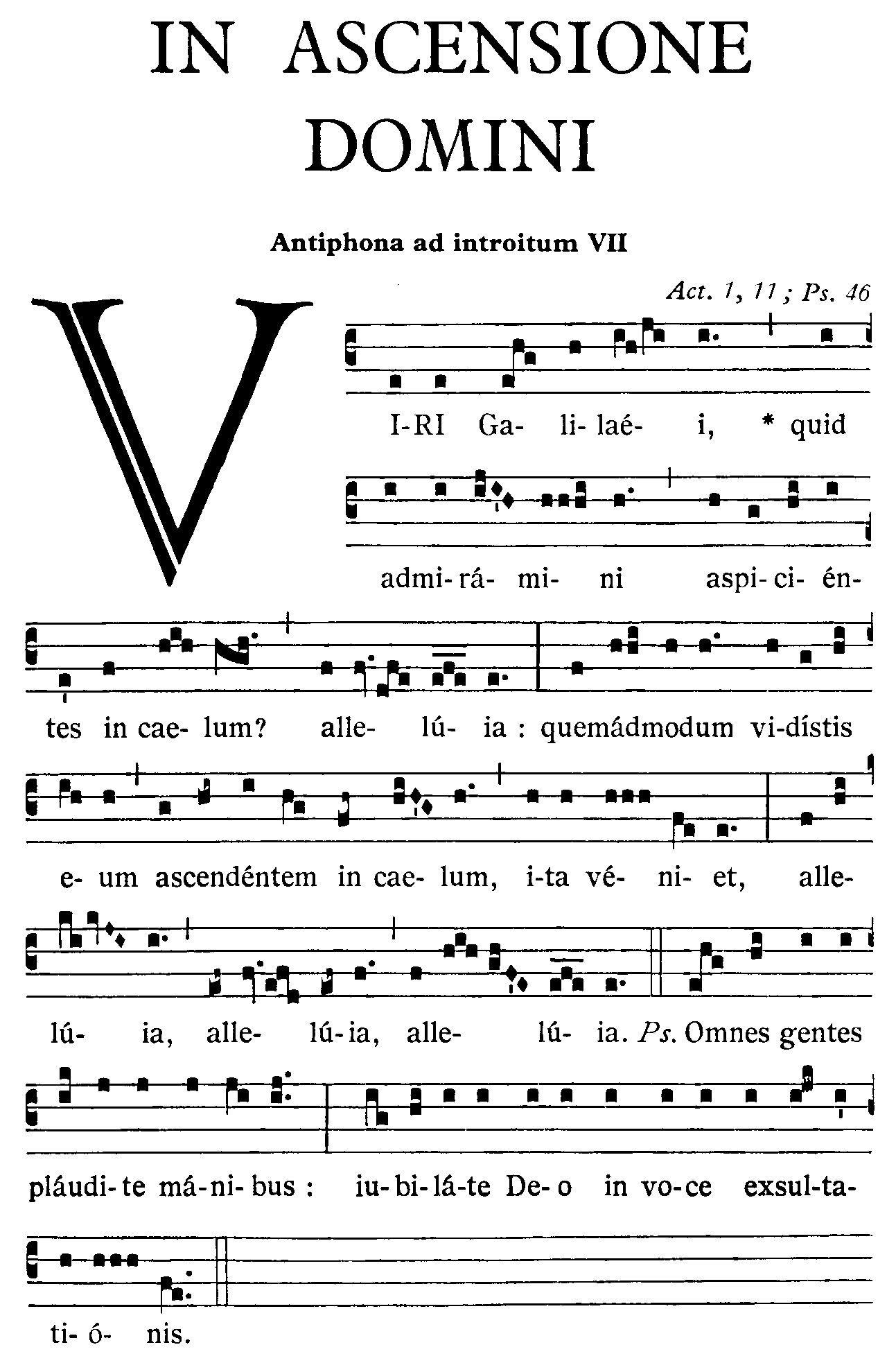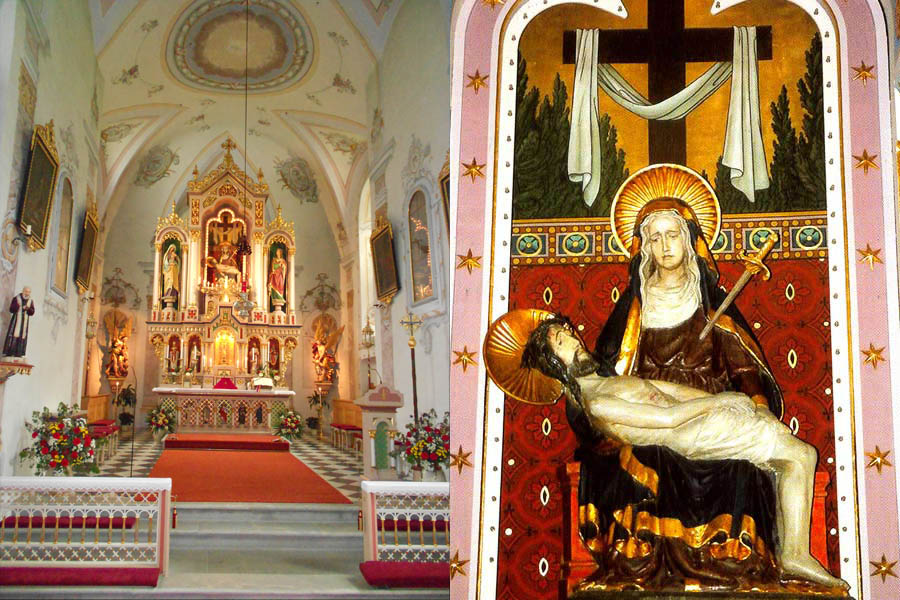The tradition of ad orientem worship is apostolic in origin. But despite that fact, there are more than a few Latin Catholics who are wary of such a tradition, in addition to other traditions such as Gregorian chant, incense, and reception of Communion kneeling and on the tongue. What’s interesting about this sentiment though, is that many of our Eastern Catholic brethren, specifically those of the Byzantine Rite, exclusively worship ad orientem.
Autore: admin
Viri Galilæi
Cantus Missæ
Ofrecemos – ad usum privatum y con el consentimiento de la Fundación Casatejada, propietaria de los derechos- algunos cantos litúrgicos y partituras en latín, del Ordo Missae y de la Misa de San Josemaría, editados por la Basílica Pontificia de S. Miguel de Madrid. Puede ser de ayuda para los sacerdotes, de modo que el canto cumpla su función en las celebraciones eucarísticas solemnes (cfr. Conc. Vaticano II, Const. Sacrosanctum Concilium, n. 112).
Cantus Sacri Selecti
© 2009 COLLEGIO ROMANO DELLA SANTA CROCE
www.collationes.org
Santuario della Natività della Beata Vergine Maria in Sombreno (BG)
In questo santuario viene regolarmente celebrata la s. Messa novus ordo in latino e ad orientem.
via Bergamo, 14 – 24030 Paladina (BG) – Italy
email: donsergio@simail.it
sito web: http://www.santuariodisombreno.it/
telefono: 035 541516
Pillole di liturgia monastica (foglietto di catechesi liturgica del parroco don Sergio Paganelli)

Sull’orientamento dell’altare e del celebrante nella celebrazione della Santa Messa
I protagonisti del dibattito sull’orientamento dell’altare e del celebrante evidenziano come la figura del presbitero che all’altare volge le spalle all’assemblea, sia espressione del carattere sacrificale della Messa, mentre, al contrario, la scelta della celebrazione versus populum risponda meglio alla natura conviviale dell’Eucaristia. Seguendo questa spiegazione, si potrebbe dire che “l’ideale” sarebbe che il celebrante celebri rivolto al popolo quei riti che manifestano più immediatamente il carattere conviviale – liturgia della Parola, ecc. –, e volga le spalle ai fedeli durante la preghiera eucaristica.
Articolo completo qui.
Offering the Novus Ordo Ad Orientem
The rubrics presume that the Mass will be offered ad orientem. Absolutely nothing in the law prevents this. So what is the problem?
I really do not think the faithful are a hurdle. If they trust their priests, if their priests love them, and they know it, they will listen. Sure, some, the more ideologically hidebound, will protest. But, as they say, one cannot please everyone.
The real hurdle lies with my brother priests.
Of course each presbyterate is different, and the Church in the US, in general, has tacked much more towards tradition and orthodoxy in recent years, than many other parts of the world. Yet, the idea that one should be offering Mass ad orientem is still considered taboo.
Full article here.
7 Ideen für eine würdige heilige Messe / 7 idee per una santa Messa degna
Priester und Gläubige sind (liturgisch) nach Osten ausgerichtet. Die Liturgiereform nach dem Zweiten Vatikanischen Konzil schreibt nicht vor, dass der Priester der Gemeinde gegenüber stehen muss. Dieser Schritt würde mehr als alle anderen dazu beitragen, die Gläubigen und die Priester die richtige innere Haltung einnehmen zu lassen.
The mass being said ad orientem means that the priest and the faithful face the same direction, (liturgical) east. Many people think that Vatican II or the Novus Ordo requires the priest to face the people. This is simply not true. In fact, the rubrics of the new mass anticipates that the mass be said ad orientem and instructs the priest when he should face the people.
Artikel auf Deutsch hier.
English original here.
Bedeutung des Latein für die Kirche / Significato del latino per la Chiesa
Eines ist unbestreitbar: Die Väter des Zweiten Vatikanischen Konzils haben an der lateinischen Sakralsprache festgehalten: „Der Gebrauch der lateinischen Sprache“, so liest man in der Liturgiekonstitution Sacrosanctum Concilium unzweideutig, „soll in den katholischen Riten erhalten bleiben …“ (Nr. 36 § 1).
Dabei wurde aus pastoralen Nützlichkeitserwägungen dem Gebrauch der Muttersprache ein weiterer Raum als bisher zugebilligt, vor allem in den Lesungen und in einigen Orationen und Gesängen (Nr. 36 § 2). Abgeschafft hat das Konzil das Latein also nicht. Wer die Messe darum auf Latein feiert, braucht sich nicht zu rechtfertigen.
Er tut nichts anders, als was das Konzil gefordert hat. Der Wortlaut des Konzilstextes spricht sogar deutlich für eine Bevorzugung der lateinischen Sprache als Kultsprache gegenüber der Volkssprache. Zu sehr waren die Väter des Konzils von der Bedeutung des Lateins für die Kirche und ihren Kult überzeugt, als dass sie sie, die zudem unsere abendländische Kultur mitgeprägt hat und ohne die Europa undenkbar ist, aufgeben wollten.
Artikel hier.


